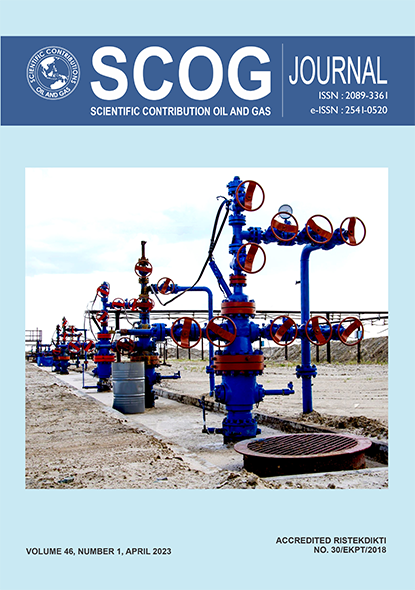The Effect Of Acid Strength Of Bronsted Acid Site On The Ability Of The Catalyst To Break The Carbon Chain Bonds Of 1-Octadekenes Into Alkanes And Short Chain Alkenes As A Substitute For Fossil Fuels
DOI:
https://doi.org/10.29017/SCOG.46.1.1311Keywords:
zeolite, kalsinasi, oksidasiAbstract
Research has been carried out on the strength of acids on their ability to break carbon chain bonds. The preparation of the zeolite catalyst includes soaking the zeolite in distilled water for 24 hours, followed by calcination and oxidation, then followed by reduction. Further acid treatment with 6 M HCl. Then followed by washing with H2O until neutral pH (pH = 7), then dried in an oven with a temperature of 105 oC, then after becoming a zeolite catalyst used in the cracking reaction of 1-octadekenes into alkanes and short chain alkenes.The results obtained are as follows for the type of zeolite catalyst with code Z having a very low acidity level of 3.15 mmol NH3/mgZeolite, then the zeolite has been modified by a calcination process for 24 hours given the code ZCA which shows a moderate acidity level of 5, 76 mmol NH3/mg Zeolite, then the catalyst with the code ZCAO is zeolite which has been calcified and oxidized and shows a yield of 9.54 mmol NH3/mg Zeolite. Catalytic hydrocracking of 1-octadecene with ZCAO catalyst at a variation of the hydrogen flow rate of 20 mL/minute and a temperature of 450 oC resulted in alkanes and alkenes < C12 which was 15.29% maximum, followed by a hydrogen flow rate of 10 mL/minute at temperatures of 500 and 400 oC.Â
References
Anderson, J.R. and Boudart, M., 1981, Catalysis Science and Technology, First Edition, Springer Verlag, Berlin.
Augustine, R.L., 1996, Heterogeneous Catalysis for Chemist, Marcel Dekker Inc., New York.
Bartholomew, C. H. and Farrauto, R.J., 2006, Fundamentals of Industrial Catalytic Processes, 2nd edition, John Wiley and Sons Inc., New Jersey.
Sang, O.Y., 2003, Biofuel Production From Catalytic Cracking of Palm Oil, Energy Sources J, 9, 25.
Santos, L.T., 2003, Nickel Activation for Hydrogenolysys Reaction on USY Zeolite, Catal. Lett. 92, 81.
Satterfield, C.N., 1980, Heterogenous Catalysis in Practices, McGraw-Hill Book Co., New York.
Sibilia, J.P., 1996, A Guide to Materials Characterization and Chemical Analysis, 2nd Edition. VCH Publishers, Inc., New York.
Twaiq, F.A.A., Asmawati Noor M. Zabidi, Abdul Rahman Mohamed and Subhash Bhatia, 2003, Catalytic Conversion of Palm Oil Over Meso Porous Aluminosilicate MCM 41 for The Production of Liquid Hydrocarbon Fuel, Fuel Process Technol, 84, 1-3, 105 – 120.
Van Santen, R.A. and Kramer, G.J., 1995, Reactivity Theory of Zeolitic Bronsted Acidic Sites, J. Am. Chem. Soc : Chem. Rev, 95, 637-669.
West, A.R., 1984, Solid State Chemistry and It’s Application, John Willey & Sons, New York.
Lestari Dewi Yuanita, 2010, Hidrogenasi Katalitik Metil 9-oktadekenoat Menjadi Stearil Alkohol Menggunakan Katalis Ni/zeolit, Tesis, FMIPA UGM, Yogyakarta
Downloads
Published
Issue
Section
License
Copyright (c) 2023 © Copyright by Authors. Published by LEMIGAS

This work is licensed under a Creative Commons Attribution 4.0 International License.
Authors are free to Share — copy and redistribute the material in any medium or format for any purpose, even commercially Adapt — remix, transform, and build upon the material for any purpose, even commercially.
The licensor cannot revoke these freedoms as long as you follow the license terms, under the following terms Attribution — You must give appropriate credit , provide a link to the license, and indicate if changes were made . You may do so in any reasonable manner, but not in any way that suggests the licensor endorses you or your use.
No additional restrictions — You may not apply legal terms or technological measures that legally restrict others from doing anything the license permits.














